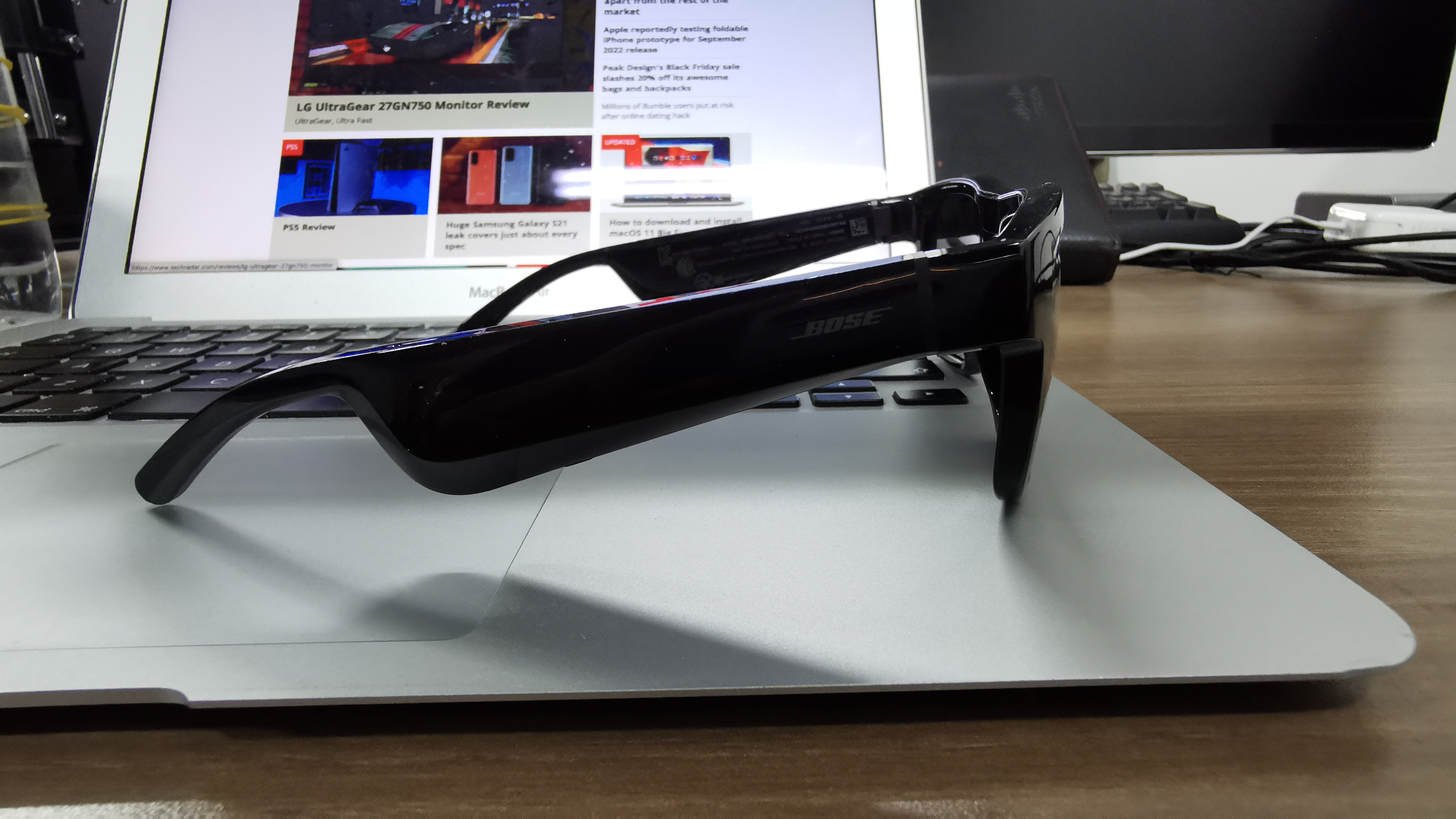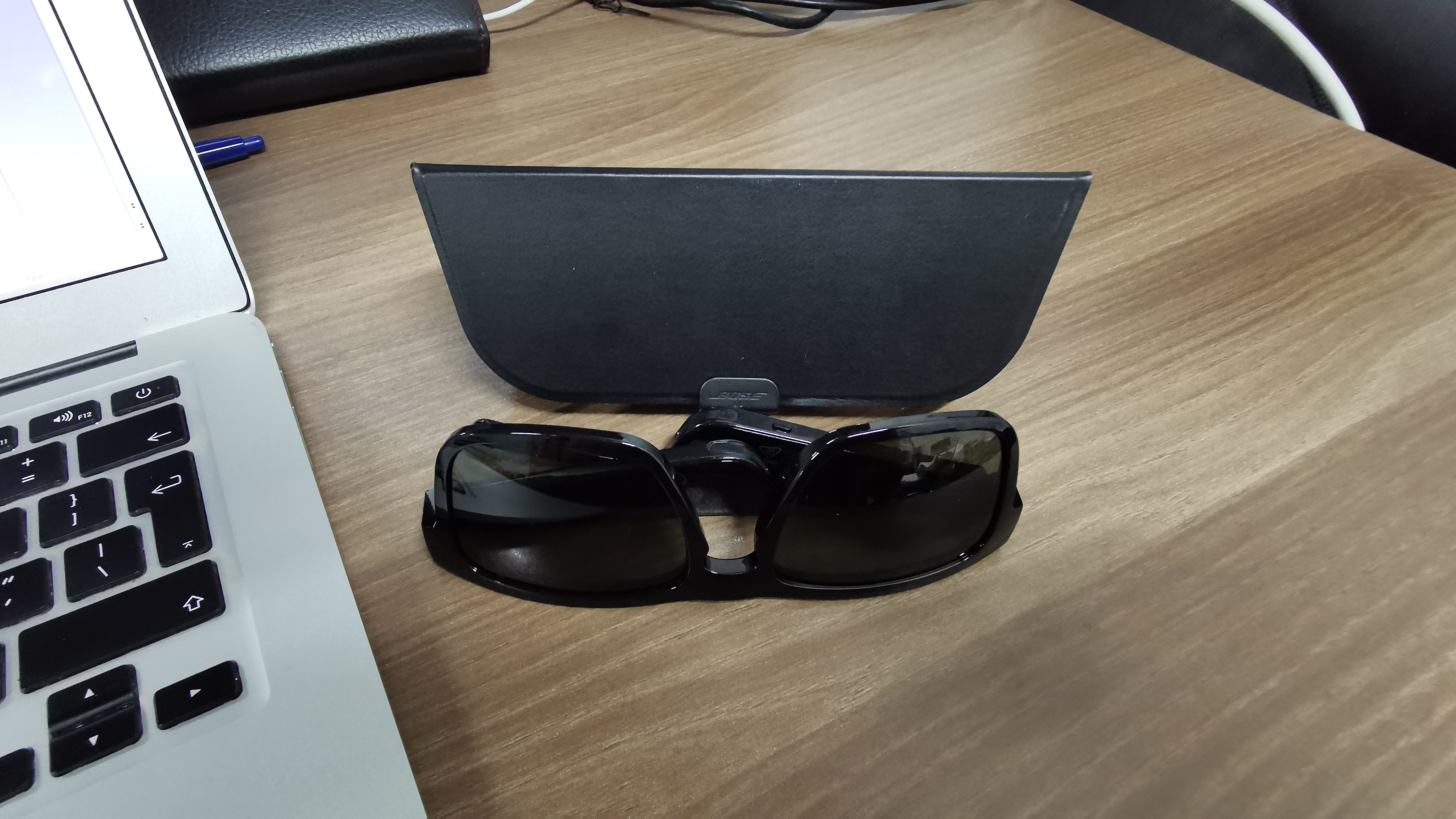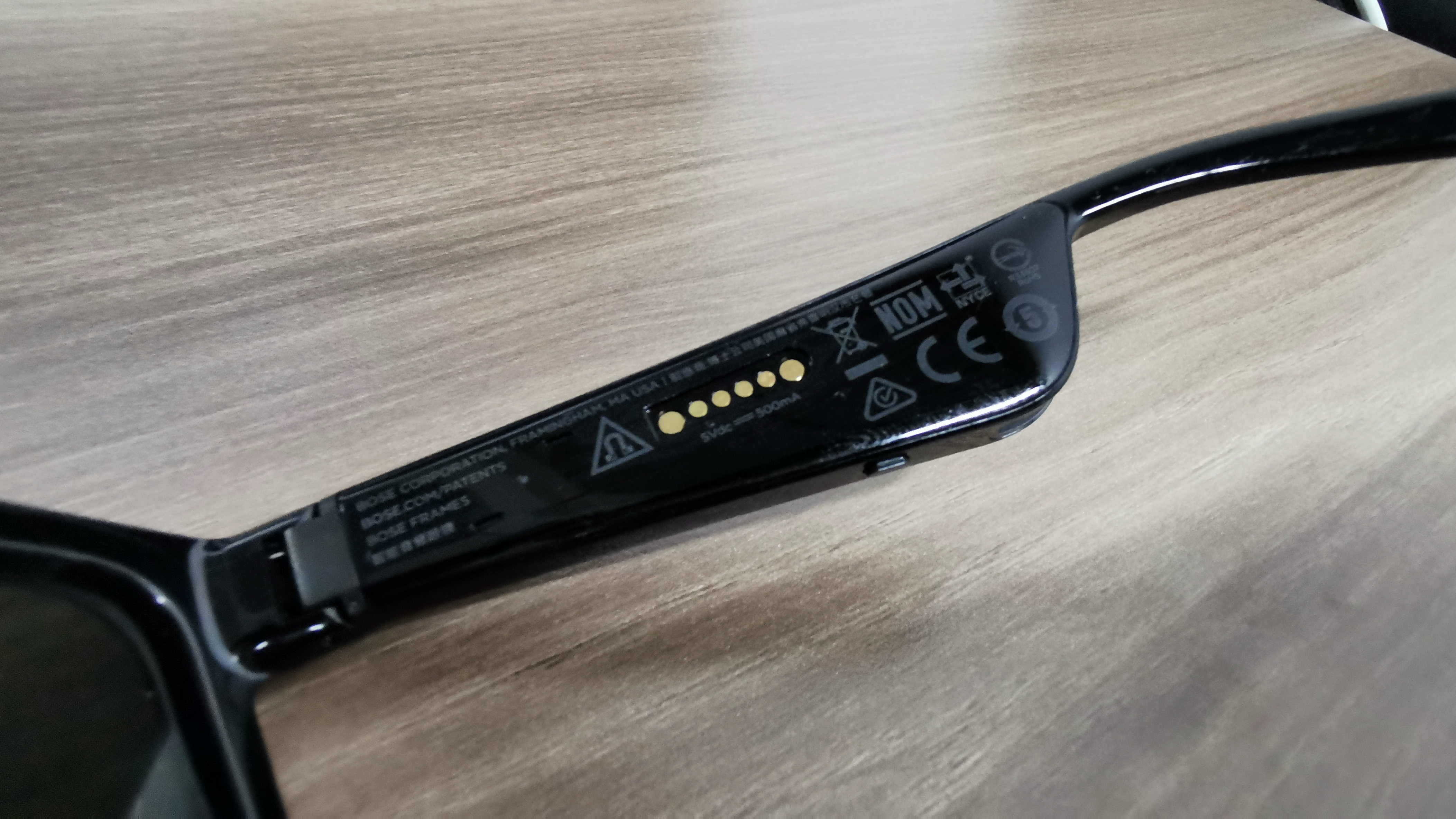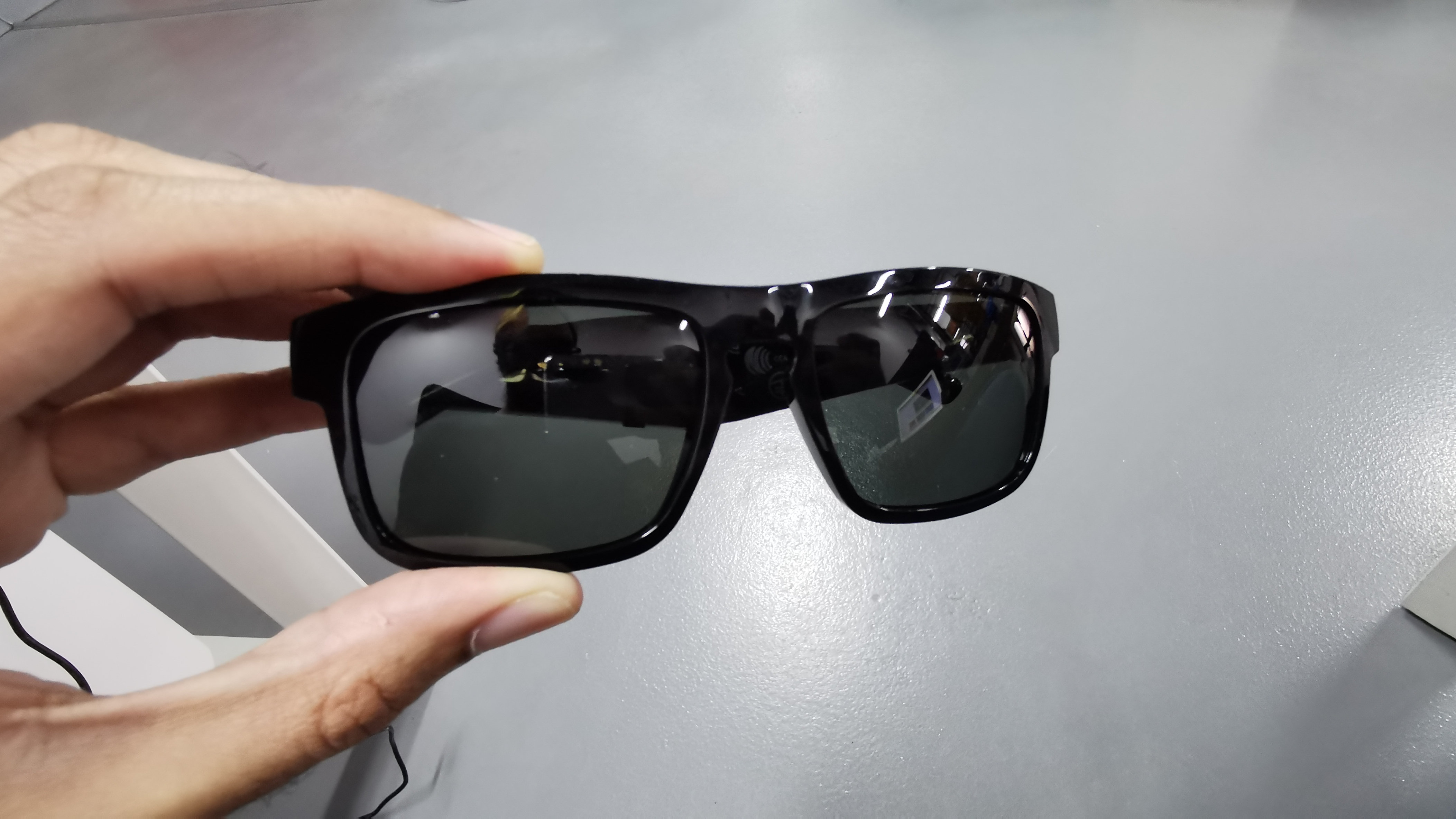Two-minute review
The original Bose Frames were certainly an interesting piece of tech, and while they were well-designed, we weren’t impressed by the fairly short battery life, lack of volume control, and slightly cheap materials.
This year Bose have taken another crack at them, and the Bose Frames Tenor is one of three models that the company has put out this year. Like their predecessors, they’re great if you want to lie by the beach or pool and listen to music, but they won’t come in handy in slightly noisy situations such as on public transport.
These aren’t designed to replace standard earphones, but are more for people who want to be aware of their surroundings while also listening to some background music. If you’re keen to pay the price for them, the Bose Frames Tenor are certainly still interesting to flaunt.
Price and availability
The Bose Frames Tenor are available now, and retail for $249.95 (£239.95, AU$399.95, AED 1,049). These frames are predominantly targeted to a male audience, while a more feminine cat-eye style is available with the Bose Frames Soprano, at a similar price range.
For that price tag you get a product that’s not going to replace a standard pair of headphones, and that’s fine – that isn’t what Bose set out to do. If you need things like noise-cancelation or just a regular pair of headphones, then there are plenty of other ones on offer from Bose.
Design
To the naked eye, the Frames Tenor look just like a normal pair of sunglasses, and that’s a good thing. The last thing you want to do with a wearable is draw unnecessary attention to it, so we’re thankful that the design doesn’t give away the tech that’s hiding away here.
One thing you’ll immediately notice about the Frames Tenor is just how thick the arms are. It’s where the battery and touch controls are housed, so it adds a bit of heft to the design. If you’re a fan of thinner arms on your sunglasses, then sadly these won’t be the ones for you.

There’s only one physical button on the Frames Tenor, which is what you use to turn them on as well as to answer calls or control music. Bose have shifted the button much further back in this model, which prevents accidental presses when you’re taking them off. The right arm allows you to adjust playback volume by swiping backwards or forwards, or you can double tap to call up your digital assistant on your phone. Volume control is a huge relief here, as it’s a critical feature that the first generation lacked. A cool feature of the Frames Tenor is you can turn them off just by laying them upside down on the table, which is a very natural gesture when you’re taking off sunglasses.
Towards the end of the arms you’ll see the small speaker grilles that aim sound towards your ears. They’re discreetly blended into the design, so even when you place the Frames Tenor on the table, they continue to look like regular sunglasses. You can easily pair them with your smartphone using the accompanying Bose Music app, but you won’t be able to adjust EQ levels in any way.

The Frames Tenor comes in two polarized lenses that are fairly easy to pop out and swap around should you desire. Prescription lenses are also an option with participating retailers, though this will vary by availability in each country.
Wearing the Frames Tenor is an interesting experience – despite their large appearance, they’re fairly light and don’t weigh down on your nose. However for users that have a slightly larger head, these are going to be quite uncomfortable. Out of six people in our office, two reported a very tight fit, so it’s important that you – like with buying normal glasses – try these on first before buying them.

One thing we’re disappointed to find with the Frames Tenor is the use of a proprietary charging port on the right arm. This means keeping track of yet another charging cable instead of using a USB-C cable, which oddly you can find on the Frames Tempo.
Audio performance
The burning question of course, is how these things actually sound. It seems that Bose listened to customer feedback from their first iteration, and have definitely improved upon the sound quality. The Frames no longer sound like someone’s playing a song on their phone speaker two rooms away, and we were surprised by both the clarity and quality of the sound playing. It’s certainly something that takes a while to get used to – having audio streamed into your ears while still being able to hear the outside world is a real multitasking feat.

It’s important that we remain realistic with our expectations of the Frames Tenor. They are certainly not designed to isolate the outside world, or even replace standard headphones. So they’re not the best mix for noisy environments – you’ll want to keep to regular noise cancelling cans instead. On public transport they produce mixed results – we could hear announcements being made, but we couldn’t listen to our normal podcast over the chatter in the carriage.
There’s also considerable audio leakage at volume levels higher than 60%, so if you’re sitting near someone, they’ll be able to quite easily hear what you’re listening to. Then again, we don’t expect anyone to be using these at full volume in typical listening scenarios.
Where we did genuinely enjoy using the Frames Tenor was poolside. It’s great to be able to have music chiming in your ears while wearing sunglasses and not having to balance headphones as well. Mind you, the Frames Tenor are only rated as IPX2 water resistant, so while they’ll survive a light splash, don’t let them fall into water.
Battery life has gotten a boost as well, with the Frames now lasting around five and a half hours before needing a recharge. This is reasonable – we don’t expect to wear these for extended periods of time, so with intermittent use you can make them last for a while.
Call quality is surprisingly excellent, with callers coming through clearly and our voices being picked up even with lots of background noise. Yes, it’s weird for people to watch you speaking into thin air while walking, but it’s something we’ll take in our stride. The only thing we’ll keep in mind is that these aren’t meant to be worn when the weather isn’t sunny, or if you’re indoors – that’s just plain silly.
Should I buy the Bose Frames Tenor?

Buy it if…
You’re fashion forward
The Frames Tenor are eye-catching and a guaranteed conversation starter, so if you like to sport the latest and most fashionable tech, then these are a perfect fit.
You don’t want to carry headphones
If you’re often forgetting your headphones or don’t have the space to carry a pair, then these will do just as fine in a pinch.
Don’t buy it if…
You want great audio
You’ll need to lower your expectations here if you’re looking to block out a noisy coffee shop or public transport – for those situations a regular pair of headphones is your only way out.
You’ve got a large head
There’s no avoiding this one – the Frames Tenor aren’t adjustable, so if you’ve got a slightly larger head, the fit will be very, very uncomfortable.
from TechRadar - All the latest technology news https://ift.tt/3l2UY3c


No comments:
Post a Comment